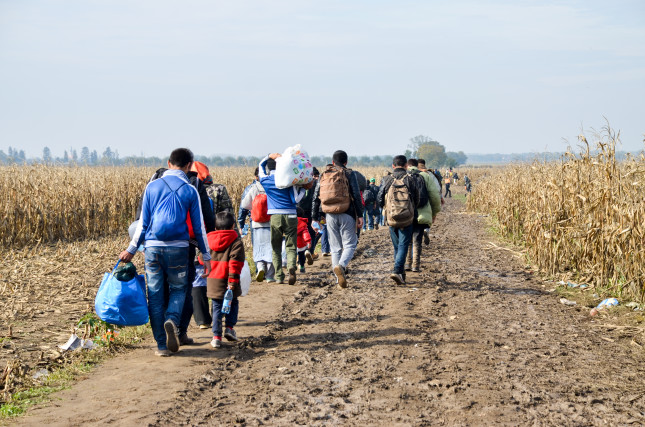-
Recommendations for the Biden Administration on Climate Migration
July 20, 2021 By Alice Chang
“There is little doubt that tens of millions of people will be displaced over the next two to three decades due in large measure by disaster and other environmental changes affected by climate, with the majority displaced within the borders of their own countries. The United States has a special responsibility to lead on issues of climate change, migration, and displacement,” said Eric Schwartz, President of Refugees International, at a recent event presenting a Blue-Ribbon Task Force report on climate change and migration.
Climate change’s impacts are felt most strongly at the local level, said Richard Santos, President and CEO of the Church World Service. “Climate change is very much on the minds of people in these communities, and is felt in their daily lives, whether it be impacts on agriculture and rural livelihoods and on disaster risks,” he said. The report calls on the Biden Administration to ensure that civil society and local communities are included in climate change adaptation planning, and that funding and support go through local mechanisms.
The impacts of climate change are likely to rise in importance as they converge with other push factors for migration. For instance, a single major hurricane can cause a country’s GDP to regress by a decade, said Alex de Sherbinin, Senior Scientist and Associate Director for Science Applications at the Columbia University’s Earth Institute.
Mitigating the challenge of climate-induced migration is a significant challenge, but not one that is unmanageable for the United States, said Elizabeth Ferris, a research professor at the Institute for the Study of International Migration at Georgetown University. The scale of migration will likely increase, she said, but “migration is a tried and true protection strategy since the beginning of recorded history for dealing with environmental hardships.” Ferris emphasized that governments—including the United States—must plan for climate-related migration and recognize that internal displacement is more common than migration across borders.
Although additional financing is crucial, the funds must also reach those who need it most, said Kayly Ober, Senior Advocate and Climate Displacement Program Manager at Refugees International. Reporting shows that only ten percent of climate financing and roughly eight percent of USAID funding goes to the local level. “Climate change impacts on migration outcomes are highly contextual,” said Ober. The report therefore makes a case for “contributing to smaller international funds that explicitly focus on locally-led climate change adaptation.”
The task force report to President Biden on the climate crisis and global migration urges the administration to commit to funding disaster risk reduction and climate change adaptation. In addition, the report provides recommendations for the “protection and resettlement of individuals displaced directly or indirectly from climate change.”
Although challenging, the nuances of climate migration also offer opportunities. “We’ve got a historic opportunity to talk about these things and hopefully come up with some better policies to respond,” said Ferris. “This opens the possibility for rich discussions among academics, NGO practitioners and the local community.”
Read More:
- Climate change has exacerbated instability and forced displacement in the Sahel.
- How can cities prepare for migration driven by climate change?
- Why policymakers should think of migration as a form of adaptation to climate change.
Source: Refugees International
Photo Credit: Syrian refugees crossing the border between Serbia and Croatia, courtesy of Ajdin Kamber, Shutterstock.com.
 A Publication of the Stimson Center.
A Publication of the Stimson Center.



